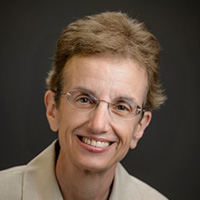Epiphany: What Do We See?
 The name Epiphany comes from the Greek, epiphaneia, and means “appearance” or “manifestation.” The birth of Jesus is a theophany; God has appeared in the flesh, in the person of Jesus Christ. The Gospel of John begins: “And the Word was made flesh and dwells among us” (Jn 1:1); and the first Letter of John proclaims: “What existed from the beginning, what we have heard, what we have seen with our eyes, what we observed and touched with our own hands—this is the Word of life!” (1 Jn 1:1), The Franciscan mystic penitent, Angela of Foligno, told her followers: “As we see, so we love, and the more perfectly and purely we see, the more perfectly and purely we love.” Indeed, the whole Gospel message is summed up in the verb: to see. Jesus often asked his disciples, what did you see? He chastised the unbelievers who claimed to see but were blind: “It is because you say you see that your blindness remains” (Jn 9:41); he healed the blind man, Bartimaeus (Mk 10:46-52), and asked his disciples, “what did you come out to see?” (Lk 7:24-26) The story of the three Magi bearing gold, frankincense and myrrh, celebrates the revelation of God; it is a story about vision. Seeing a brightly shining star in the east, the wiseman traveled across rugged terrain to see the newborn lying in the manger. Once they saw, they did not return to their homeland by the same route but traveled in a new direction. The story symbolizes the heart of epiphany: once we see, we are no longer the same and can no longer travel by the same route. We see everything from a new perspective and must travel in a new direction.
The name Epiphany comes from the Greek, epiphaneia, and means “appearance” or “manifestation.” The birth of Jesus is a theophany; God has appeared in the flesh, in the person of Jesus Christ. The Gospel of John begins: “And the Word was made flesh and dwells among us” (Jn 1:1); and the first Letter of John proclaims: “What existed from the beginning, what we have heard, what we have seen with our eyes, what we observed and touched with our own hands—this is the Word of life!” (1 Jn 1:1), The Franciscan mystic penitent, Angela of Foligno, told her followers: “As we see, so we love, and the more perfectly and purely we see, the more perfectly and purely we love.” Indeed, the whole Gospel message is summed up in the verb: to see. Jesus often asked his disciples, what did you see? He chastised the unbelievers who claimed to see but were blind: “It is because you say you see that your blindness remains” (Jn 9:41); he healed the blind man, Bartimaeus (Mk 10:46-52), and asked his disciples, “what did you come out to see?” (Lk 7:24-26) The story of the three Magi bearing gold, frankincense and myrrh, celebrates the revelation of God; it is a story about vision. Seeing a brightly shining star in the east, the wiseman traveled across rugged terrain to see the newborn lying in the manger. Once they saw, they did not return to their homeland by the same route but traveled in a new direction. The story symbolizes the heart of epiphany: once we see, we are no longer the same and can no longer travel by the same route. We see everything from a new perspective and must travel in a new direction.
Seeing is at the heart of the Franciscan charism. Francis of Assisi was a visual person who saw God in the leper, the birds, the poor and all creation. His depth of vision was so great that he was often moved to tears. He wept at the sight of two twigs formed in the shape of a cross, and often bathed himself in tears while praying alone in the woods. Seeing and believing formed the heart of Francis’s way of life and inspired Franciscan theologians to study the natural world. In the Middle Ages, science was a theological endeavor. Study of the natural world could lead one to God because, as one observed the natural world, one could recognize the footprints of God in creation.
Science has always been a discipline based on seeing, which is one of the reasons why western science flourished among Christian believers, from the late Middle Ages into the modern period. Teilhard de Chardin was a scientist, and it is no surprise that his whole system is based on vision. He wrote his magnum opus, The Human Phenomenon, at a time of war, “from a sense of organic crisis in evolution, to free humanity from fear and despair so as to give new hope and heart for life.”[i] The purpose of The Human Phenomenon is to introduce the reader to the “epic and drama of space-time.”[ii] Evolution is more than an explanation for biological diversity, according to Teilhard; it is an open process of increasing complexity and consciousness on every level of biological life. In The Human Phenomenon he wrote: “They truly are blind who do not see the scope of a movement whose orbit, infinitely transcending that of the natural sciences, has successively overtaken and invaded the surrounding fields of chemistry, physics, sociology, and even mathematics and history of religions.” [iii] The key to Teilhard’s method of cosmic evolution lies in the power of vision. He identifies his work, The Human Phenomenon, as a scientific treatise and states in the prologue that true scientific understanding depends—not on the power of observation per se–but on the power of vision. By challenging scientific materialism (the self-sufficiency of matter), Teilhard said there is an ineffable power at the heart of matter. If we can begin to see this power of matter, we will awaken to the beauty of matter and its capacity to become something more. For Teilhard, vision is a level of integrated consciousness, beyond the analytical capacity to examine and rationalize. By “vision” he meant something more than mere physical sight. Rather, the “inner eye” must see what the “physical eye” observes, so the mind is integrated with the senses in the perception of that to which one relates. He wrote: “To see is to develop a homogenous and coherent perspective of our general experience as it extends to the human being; that is, to see a whole that unfolds.”[iv] His objective was to see and to make others see, as he wrote: “One can say that the whole of life lies in seeing. . .unity grows. . .only if it is supported by an increase of consciousness, of vision.”[v] He goes on to say “if we lack these qualities of sight, no matter what anyone does to show us, the human being will indefinitely remain for us. . .an erratic object in a disconnected world.”[vi] Those who see “have the sense of the world as a unified whole in movement. Those who do not see, do not see beyond the multiple. They perceive the world as fragmented and ultimately absurd.”[vii]
The Teilhardian vision is all about epiphany. In his beautiful essay on “The Heart of Matter,” Teilhard proclaimed: “The rising Sun was being born in the heart of the world. God was shining forth from the summit of that world of matter whose waves were carrying up to him the world of spirit.”[viii] His mystical-scientific vision suggests that science may be a greater religious endeavor than going to church or saying a lot of prayers. The late Fr. Tom King, SJ spoke of Teilhard’s scientific faith as “dark adoration,” a confessional faith that says to the effect, I believe matter can do great things and even greater things, because God is the power of matter and matter is constantly revealing God.
So much of religion today is old and outdated. It belongs to another era, another cosmos. Most of Christian doctrine is abstract, philosophical and dualistic. Although several Christian meditation practices have become welcome resources to sustain the human journey through our complex times, these too are outmoded and outdated in their method and function. We have nothing that really inspires evolution, innovation, creativity and transcendence. Much of Christian spirituality is like maintenance service, keeping one’s old car tuned-up and in the garage, good for local use. Prayer itself is sometimes self-therapy, making us feel cared for and close to God in a heartless world. We lean on this gift that keeps on giving, like a pair of crutches. But there seems to be no real connection, at times, between the God who we imagine to exist, based on our own interiority, and the God who is at home in evolution chaos, creativity and transcendence. Prayer can domesticate God but, if the story of Jesus is to be believed, God is a trickster, an elusive, dynamic wellspring of love urging us on toward something wonderfully new.
I think the mystics today are not so much in religious communities or monasteries or in local ZOOM groups but the believers who see a power at work in the ways science and technology are advancing human personhood. Christians should be deeply concerned about science and technology because Christianity is all about personhood, and technology is the fastest evolver of the human person today. Some contemporary mystics see the new virtual world of computer technology as an extension of the inner self and hence the capacity of imaginative virtual worlds to collectively form more contemplative citizens. They claim that cyberspace can conceivably lead to a more conscious and creative planet. Others, like the late Marshall McLuhan who was a devout Catholic, saw the world of media communications as theophanic and incarnational. According to McLuhan (like Teilhard and Carl Jung), God is rising up through increased consciousness and collective imagination. In a 1964 interview, McLuhan expounded his incarnational vision of computer technology by saying:
With computer technology, we could proceed from translating languages to bypassing them entirely in favor an integral cosmic unconsciousness. . . .The computer holds out the promise of a technologically engendered state of universal understanding and unity, a state of absorption in the logos that could knit mankind into one family and create a perpetuity of collective harmony and peace. . . Psychic communal integration, made possible by the electronic media, could create the universality of consciousness foreseen by Dante when he predicted that we would continue as not more than broken fragments until they were unified into an inclusive consciousness. . . the mystical body of Christ. . . the ultimate extension of ‘man.’
This is epiphany; this is what it means to see. The seer sees something that does not yet exist; knows something is seeking to exist; and acts to making something exist in a new way. If Christians really want to claim their place in this dynamic flow of evolving life, then it is time to get out of the doldrums, the old spaces of detached spirits and other-worldly prayers and join in the flow of conscious creativity. This is where God is living, moving and becoming something more divine, more material, more conscious, more whole. Why do we seek the living among the dead? If we truly see, then we must quickly run into the future with a new zest for life.
Notes
[i] Sarah Appleton-Weber, introduction to The Human Phenomenon (Brighton: Sussex Academic Press, 1999), xxi.
[ii] Appleton-Weber, Introduction to The Human Phenomenon, xxi.
[iii] Pierre Teilhard de Chardin, The Phenomenon of Man, trans. Bernard Wall (New York: Harper, 1959), 219.
[iv] Teilhard de Chardin, The Human Phenomenon, 6.
[v] Teilhard de Chardin, The Human Phenomenon, 3.
[vi] Teilhard de Chardin, The Human Phenomenon, 5.
[vii] Appleton-Weber, introduction to The Human Phenomenon, xix.
[viii] Teilhard de Chardin, The Heart of Matter, 74.
 View print-friendly version
View print-friendly version
7 Comments
Related Posts

Love and Political Order: The Evolutionary Path to Unity
We live in an age of fragmentation. Politically, we witness the hardening of tribal identities and nationalist divisions. Ecologically, we confront a world torn between exploitation and preservation. Socially, we…


These too are my thoughts and questions–practical application and participation. Yesterday, our small group discussed personal experiences of “seeing” God–visualizations, raptures. My experiences likely happen in nature or seeing the divine in others, interactions as when an intact bird’s nest falls onto my path just as I’m pondering fears about circumstances that could break my family. Or in an experience of synchronicity, synthesis of metaphor and ideas while reading scripture, visualizing, writing, painting or making art.
In my undergrad/early career choice to pursue broadcast production in the 70s, I was inspired by McLuhan and dreamt of being part of a force of social change and education through mass media around the world. I produced programming on social problems in a relatively small media market with some success for those times. Yet the hoops, demands, pay in this industry became untenable for my intentions and dreams as a woman at the time and I returned to school to teach and eventually become a psychotherapist working with families, groups, and individuals.
These career choices also had their built-in barriers that kept the spiritual separate that I was more able to navigate and integrate with experience. I can see this vision in my imagination, and believe in our universal interconnectedness. Getting through the current divisiveness in our world, of ideas, resources and wealth is discouraging. What would this look like on the computer, in software development or social media design? So I continue to plant seeds on various soils in small ways learning and discussing the universal, cosmic Christ.
I appreciate this letter. Thank you. I can see and agree how this transformation and “coming back to our senses” is necessary for our world.
I did have trouble understanding or perhaps imaging, what was meant in:
“Christianity is all about personhood, and technology is the fastest evolver of the human person today. . …….Psychic communal integration, made possible by the electronic media, could create the universality of consciousness foreseen by Dante when he predicted that we would continue as not more than broken fragments until they were unified into an inclusive consciousness. . . the mystical body of Christ. . . the ultimate extension of ‘man.’”
That whole piece was beyond my vision or imagination and would love to have a practical example of how this could be lived out on in the day to day.
Peace to you
Anne McKeon, Ireland
Very timely article to help us see the presence of the Divine Word in our “troubled world” today! Just wondering: is there an email address to reach Sr. Delio? Many thanks!
HI Paul, Feel free to contact us at info@christogenesis.org. Blessings
What a great conclusion! I want ” to run into the future with a new zest for life”..
You had me nodding until this quote: “The computer holds out the promise of a technologically engendered state of universal understanding and unity, a state of absorption in the logos that could knit mankind into one family and create a perpetuity of collective harmony and peace.”
There is no way the computer is going to issue in an era of harmony and peace. You are simply not ‘seeing’ if you believe so.
Anthony
I see matter inspired by spirits, I see spirits invoked by matter. In it all is God’s Holy Spirit and His spirit is never alone. It is unified with and by all that which invokes and that which inspires all that is sacred or profane…. We are the voice of all spirits, and so we should endeavor to remain in the Holy Spirits presence, for the power of God’s
love causes all spirits to reveal only in truth.
What do you see Ilea?
Much love and appreciation for all you do sister Ilea.